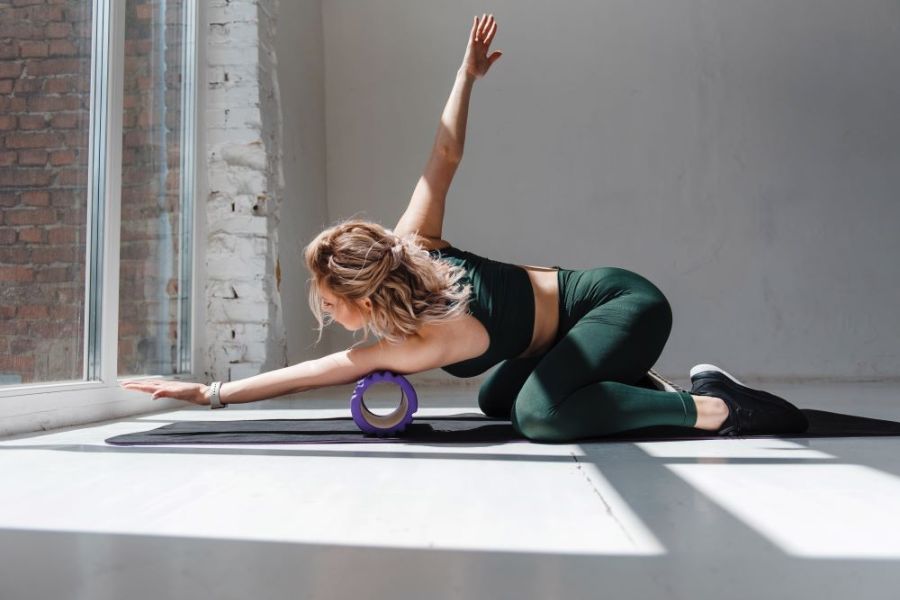Fed up with always being sidelined due to a niggle? More than 1 million Brits go to A&E with sport injuries each year according to the BMJ’s Emergency Medicine Journal. Make sure you’re not one of them by adding these natural methods to your recovery regime. From roam rolling to yoga and stretching, here’s how to prevent sports injuries…
1. Build strength to prevent sports injuries
One of the best ways to prevent sports injuries is through strength-building exercises. A review of studies published in the British Journal of Sports Medicine looked at more than 7,500 participants and found strength-training programmes reduced sports injuries by an average of 66 per cent.
‘Strength training can promote growth in ligaments, tendons, bones, cartilage and connective tissue, which is particularly important for sports where you’re using the same muscle groups over and over again,’ says Christian Allen, product expert at Runners Need. To get the most out of your strength training, make exercises targeted and specific.
‘For example, runners should incorporate unilateral exercises such as lunges and step-ups, as well as those that help core strength. Compound total body exercises, including squats and deadlifts, are also good to help strengthen the muscles that you use when you run,’ he adds.
Related: Strength training for beginners: 6 tips to get started
2. Foam roll regularly
Make it part of your regular routine and foam rolling won’t just boost flexibility and increase your range of motion, research shows it’s also a promising tool in the prevention and treatment of neuromuscular fatigue and sports-related muscle injuries.
‘Foam rolling can also help prevent delayed onset muscle soreness (DOMS), as it encourages blood flow to the muscles, which aids recovery,’ adds Maria Eleftheriou, head trainer at Psycle.
‘The roller starts to break down the muscle fibres and helps carry away waste to decrease inflammation. You can also roll as part of your warm-up routine, as it increases range of motion to protect from injury.’ Check out Eleftheriou’s foam roller workout at the end of this article to get started.
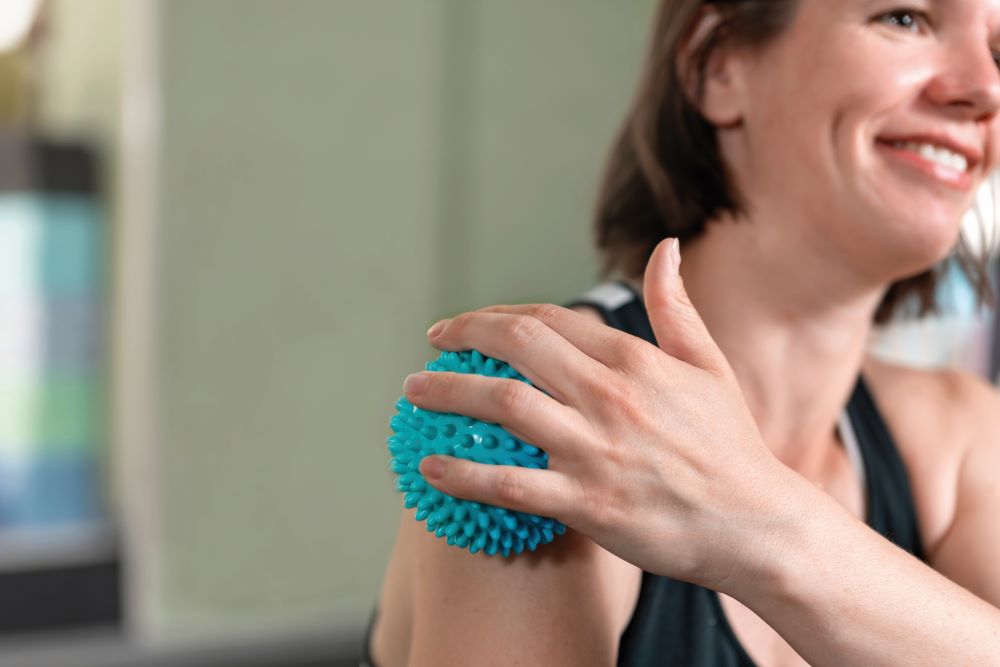
3. Try self-massage
You don’t need to seek out a professional to reap the benefits of massage. ‘Self-massage immediately after exercise will significantly reduce soreness, fatigue and tightness within the next 72 hours,’ says massage expert Beata Aleksandrowicz.
‘Squeeze the muscles on your arms and legs between your thumbs and fingers, rotating and kneading the tissue with small grabbing movements,’ she suggests. Or try firm pressure on knots of muscle on the shoulders and upper back. ‘Using the finger pads of your fingers, press pressure points on the out-breath, hold for a few seconds and release, to avoid an accumulation of lactic acid. Otherwise, you’ll feel stiffness in the muscles and that will put pressure on joints and ligaments.’
Aid the process with Ishga Muscle Recovery Oil (£39), with anti-inflammatory rosemary, eucalyptus and rose geranium oils.
Related: Sports massage: benefits, risks and what to expect
4. Stay on form to prevent sports injuries
‘Performing an exercise with incorrect technique can lead to undue stress being placed on joints, muscles and supporting structures such as tendons and ligaments,’ warns PT and fitness coach Tom Cuff-Burnett (@tomcuffb_fitness). Cardio is less of an injury risk than resistance, but you still need to be careful.
‘When running, for example, poor alignment can cause issues with ankles, knees, hips and back. Get someone to assess your gait to diagnose any issues like overpronation (collapsing of the arch) or ankle eversion (ankles rolling out) to prevent issues developing.’
For resistance work or weight training, the most common fault is rounding of the back, says Cuff-Burnett. ‘It’s usually caused by attempting to lift too heavy a load [e.g. when deadlifting] and can create an imbalance in the distribution of load between the hips and lower back.’ Prevent your back rounding excessively by driving sufficiently though your legs and creating tension throughout your body as you lift.
5. Make time for stretching
Warming muscles before training and easing out tension afterwards will go a long way to keeping injuries at bay. But which type of stretches are best? Static – where you sit, stand or lie down and hold a single position for 30 seconds or more – or dynamic – which get your body moving and prepare it for action?
‘You should do dynamic stretching before anything that’s going to increase range of movement at the joints, as this will increase blood flow to muscles,’ advises PT Josh Ivory (@josh_ivory). ‘Static stretching decreases lactic acid build-up, which will decrease DOMS and improve flexibility over time.’
Try Ivory’s top three stretches to prevent sports injuries when doing a lot of running – Laying hamstring curl, Elevated hip flexor stretch and Piriformis stretch.
Related: Why stretching is important before & after a workout
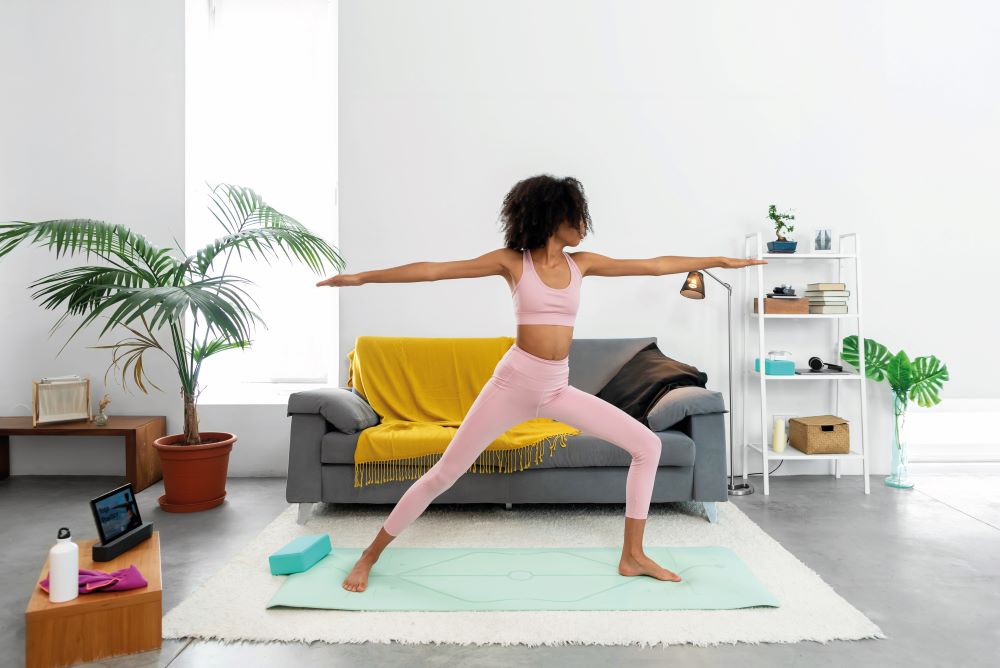
6. Jump on your yoga mat
Yoga improves joint and core stability as well as core strength, all of which will keep you safer when working out. ‘Yoga will give you stronger foundations, more balanced strength throughout your body and you’ll move with a stronger core as well,’ says Ivory. ‘You use core stability for pretty much every activity and every lift, so the stronger your core is, the less likely you are to sustain injuries.’
Additionally, focus on standing poses such as chair, warrior II and extended side angle for whole-body strength, and spend time in tree, warrior III and extended hand-to-big toe pose for working on your balance.
Related: 10 minute yoga abs workout to strengthen your core
7. Work with your menstrual cycle
You may not feel like a heavy workout while you’re menstruating, but there are definite advantages to knowing which phase of your cycle you’re in and adjusting your training accordingly if you want to avoid training mishaps.
Not convinced it matters? Research in the BMJ found injury incidence rates were 47 and 32 per cent higher in the late follicular phase (days 7-13 in a 28-day cycle). Specifically, muscle ruptures, tears, strains, cramps and tendon injuries/ ruptures occurred twice as often.
The reason? One theory is that while you’re likely to have more energy as oestrogen levels are rising (making it a good time to do strength training and HIIT – high-intensity interval training) higher oestrogen levels can make your ligaments lax, increasing your risk of injury.
Related: Exercise + the menstrual cycle: advice and workout plan
8. Try our foam roller recovery workout
Try the foam roller sequence, below, from Maria Eleftheriou to target some of the major muscle groups in the body. ‘Start by rolling your bodyweight back forth gently, with the roller against the target muscle,’ she says.
‘Use your breath to inhale and exhale deeply as it can be quite intense if your muscles are particularly sore. When you hit a tender spot, try to hold yourself there for a few deep breaths. Roll for about 20 minutes straight after exercising, then repeat 24 and 48 hours after. ‘You can foam roll two to three times a week, depending on how often you exercise.’
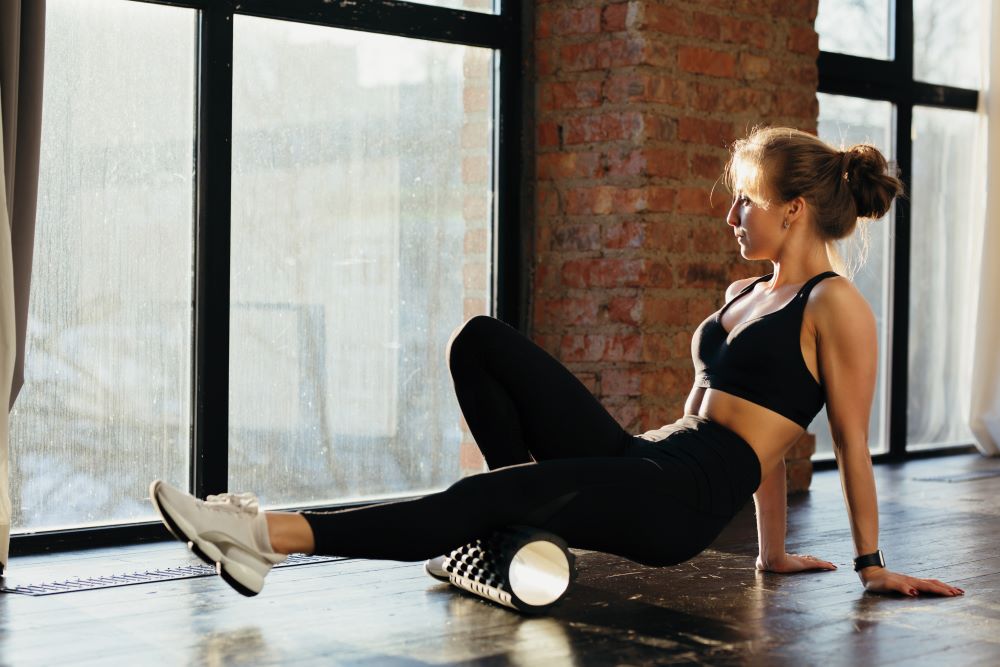
Move 1: Hamstrings and Calves
- Sit with your left leg extended and your right knee bent with your right foot on the floor. Place the roller beneath the back of your left leg towards your glutes and lean back on your hands. You can also explore the side of your glutes and into your IT band on the outside of your left leg whilst in this position.
- Lift your bodyweight off the floor and begin to slowly roll up and down towards just before the back of your knee and then up towards your glutes. Be mindful of how this feels for your wrists.
- Repeat on your right side, targeting each leg for between 30 seconds to a minute. Then repeat, but with the roller placed behind the calf muscle on each side, working back and forth and side to side on the foam roller to target different points in the muscle.
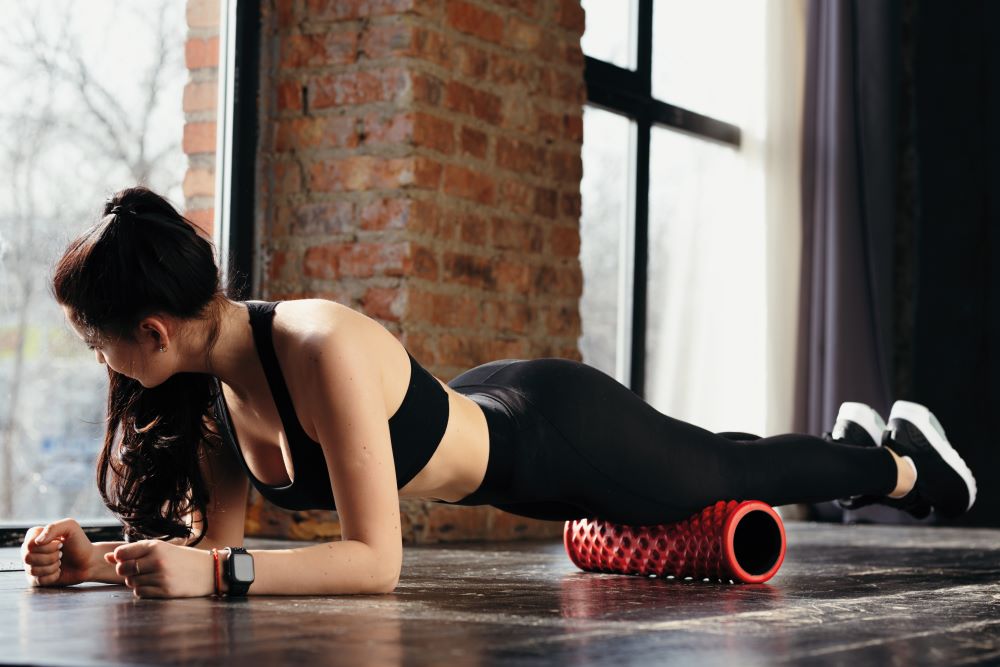
Move 2: Quads
- Start in forearm plank, with the roller under your right quad muscles (front thigh).
- Slowly move down the roller until just above your knee and then back up in the opposite direction until you reach you hip flexor.
- Repeat on your left side, targeting each leg for 30 seconds to a minute. Alternatively, perform the move on both legs simultaneously (pictured).
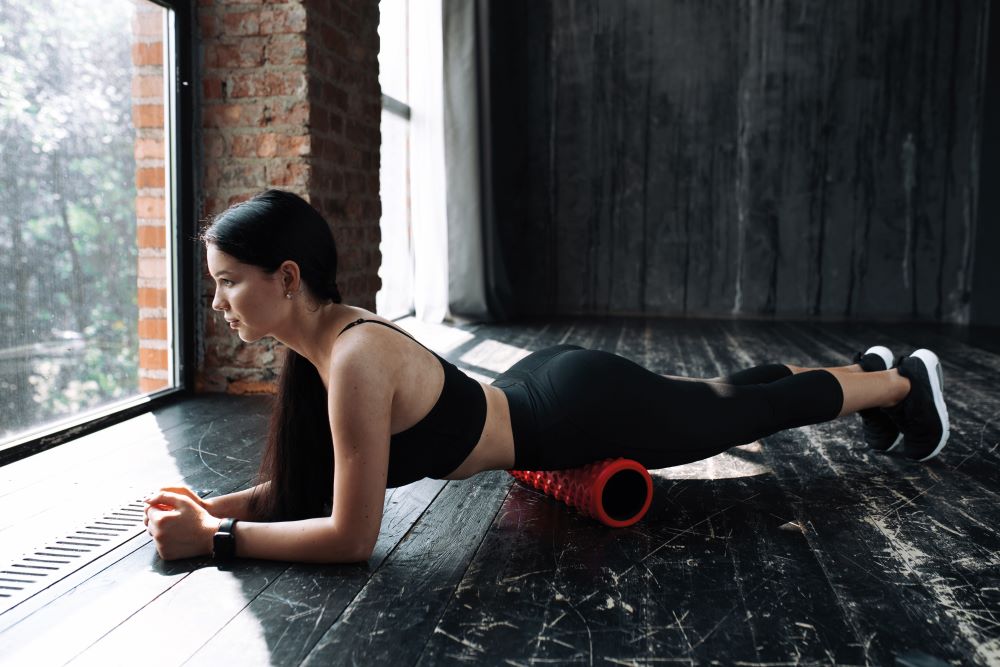
Move 3: Hip flexors
- Start in forearm plank, with the roller under your hip flexors.
- Perform small rolling movements up and down, diagonally and side to side for 30 seconds to a minute to target different points in the muscle.
- Alternatively, place the roller under one hip flexor and bend the opposite knee to the side to target one side of the body at a time.
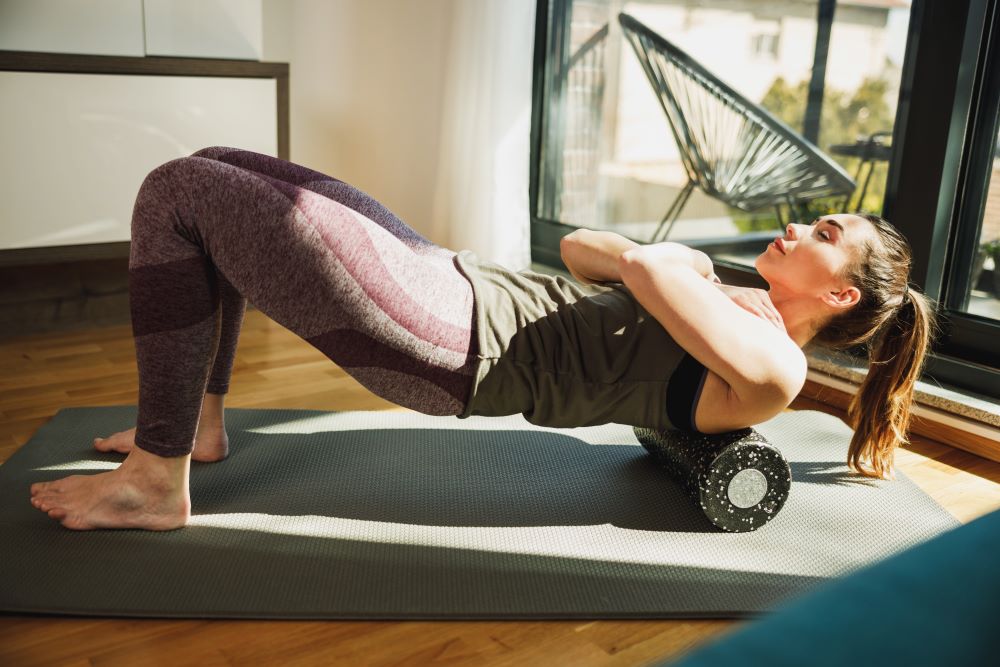
Move 4: Upper back & shoulders
- Lie on your back, knees bent, feet flat on the floor. Place the foam roller about a third of the way down your back (on your bra strap line), your arms by your sides or crossed over your chest.
- Lift into a low bridge and begin to gently role up towards the lower part of the neck and then back down to the start position. Make sure to roll both sides equally, avoiding putting pressure on your bones and avoiding the lower back.
- Stay here for up to a minute, take a 30-second break and repeat if comfortable.
Want more ways to strength train or ease tight muscles? Try Psycle’s brand new Reformer class at the Oxford Circus studio. This new super-efficient, low-impact, yet high-intensity workout, will help lengthen and release muscle tightness to strengthen your entire body.

